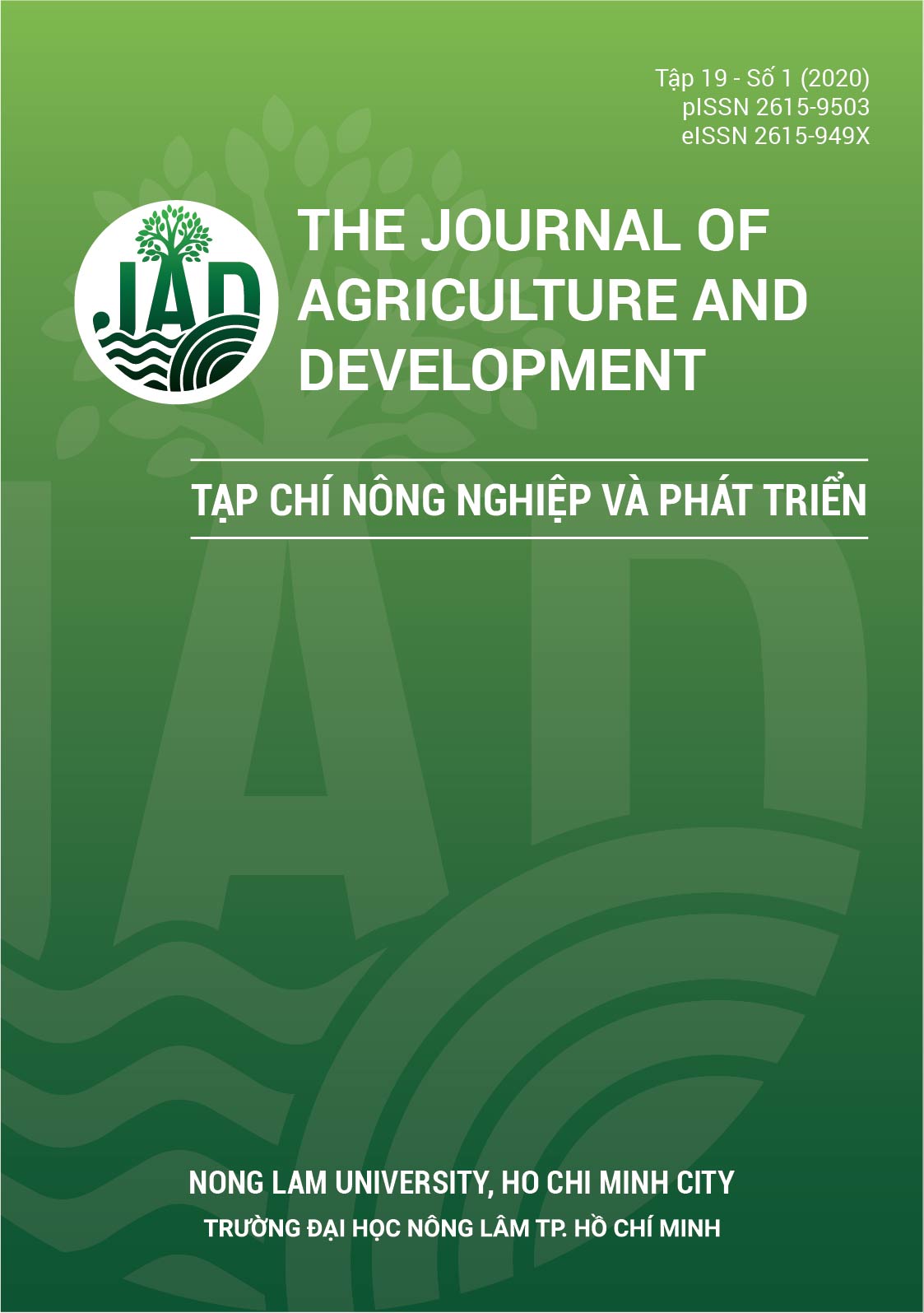Estimation of air emissions and applying GIS technology to build emissions map from area source in Ho Chi Minh City
Main Article Content
Abstract
The actual status of air pollution in HCM City is alarming and causing many impacts on human health. The sources of air pollution are classified into four main sources: industrial (point source), transport (line source), area and biological source. The study focused on emission inventory for the area source, including domestic cooking activities, restaurants, cafeterias, petrol stations, photocopy, construction materials stores, construction works, garages, pagodas, straw burning... Emissions inventory method make accurate, reliable and well-defined assessment decisions that show that the use of large amounts of coal and charcoal produces large amounts of gaseous pollutants: TSP, NO2, SO2, CO, CH4 and NMVOC... in which household activities account for about 90% of total emissions and 38% TSP amount of total emissions in the source. Application of GIS tools to develop emission maps for identifying high emission areas. The aim of the study was to point out the main cause of emissions in the source area and areas with high emissions (such as District 3, District 4, District 8, Binh Chanh and Cu Chi) so that solutions created to minimize emissions from the burning of fossil fuel for cooking activities of Ho Chi Minh City’s people would be economical and highly effective...
Article Details
References
Cai, S., Li, Q., Wang, S., Chen, J., Ding, D., Zhao, B., Yang, D., & Hao, J. (2018). Pollutant emissions from residential combustion and reduction strategies estimated via a village-based emission inventory in Beijing. Environmental Pollution 238, 230-237. https://doi.org/10.1016/j.envpol.2018.03.036
CASCAR (Clean Air for Smaller Cities in the ASEAN Region). (2012). Chiang Mai municipality atmospheric emission inventory (Technical Report, Project of Clean Air for Smaller Cities in the ASEAN Region Funded by GIZ).
Garg, C., & Jain, A. (2014). Green concrete: Efficient & eco-friendly construction materials. International Journal of Research in Engineering and Technology 2(2), 259-264.
Ho, B. Q., Vo, H. T. T., & Chuanak, S. (2013). Evaluation of air pollutant emissions and modeling of air quality in Saigon Port, Vietnam. Science and Technology Development 16(1), 12-21. https://doi.org/https://doi.org/10.32508/stdj.v16i1.1383
Ho, D. M. (2011). Air pollution due to traffic activities in Ho Chi Minh City: develop air emission factors and air quality modeling (Unpublished doctoral dissertation). Institute of Environment & Resources, Vietnam National University, Ho Chi Minh City, Vietnam.
Jeuland, M. A., & Pattanayak, S. K. (2012). Benefits and costs of improved cookstoves: assessing the implications of variability in health, forest and climate impacts. PloS one 7(2), e30338. https://doi.org/10.1371/journal.pone.0030338
Markakis, K., Im, U., Unal, A., Melas, D., Yenigun, O., & Incecik, S. (2012). Compilation of a GIS based high spatially and temporally resolved emission inventory for the greater Istanbul area. Atmospheric Pollution Research 3(1), 112-125. https://doi.org/10.5094/APR.2012.011
MONRE (Ministry of Natural Resources and Environment). (2016). National report on environmental quality 2016. Ha Noi, Vietnam: MONRE Office.
Nielsen, O. K. (2013). EMEP/EEA air pollutant emission inventory guidebook 2013: Technical guidance to prepare national emission inventories. EEA Technical Report. Luxembourg: EEA-European Environment Agency.
SOHCMC (Statistics Office of Ho Chi Minh City). (2015). Statistic yearbook of Ho Chi Minh City 2015. Ho Chi Minh City, Vietnam: Statistical Publishing House.
Zhang, Q., Wei, Y., Tian, W., & Yang, K. (2008). GIS based emission inventories of urban scale: A case study of Hangzhou, China. Atmospheric Environment 42(20), 5150-5165. https://doi.org/10.1016/j.atmosenv.2008.02.012








